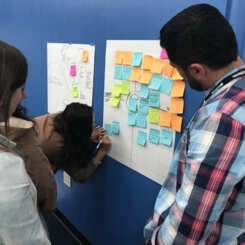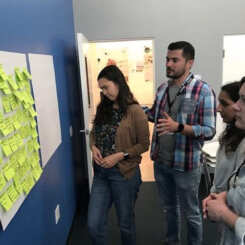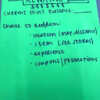Human-centered design thinking is used to create everything from the built environment and medical devices to websites and shopping apps. Companies are now more focused on social consciousness and environmental issues and are moving away from traditional business models driven purely by profit, convenience and disposability. There is a global wave towards purpose-driven businesses operating in a completely different way.
As part of the continuing education program at Comet Creative, I recently participated in a 48-hour, three-day event called the Global Service Jam hosted by the Design Forward Alliance in late March. Held at the NewSchool of Architecture & Design, the event’s sole focus was to employ “service design” to solve some of our most urgent community and global problems.
What is Service Design?
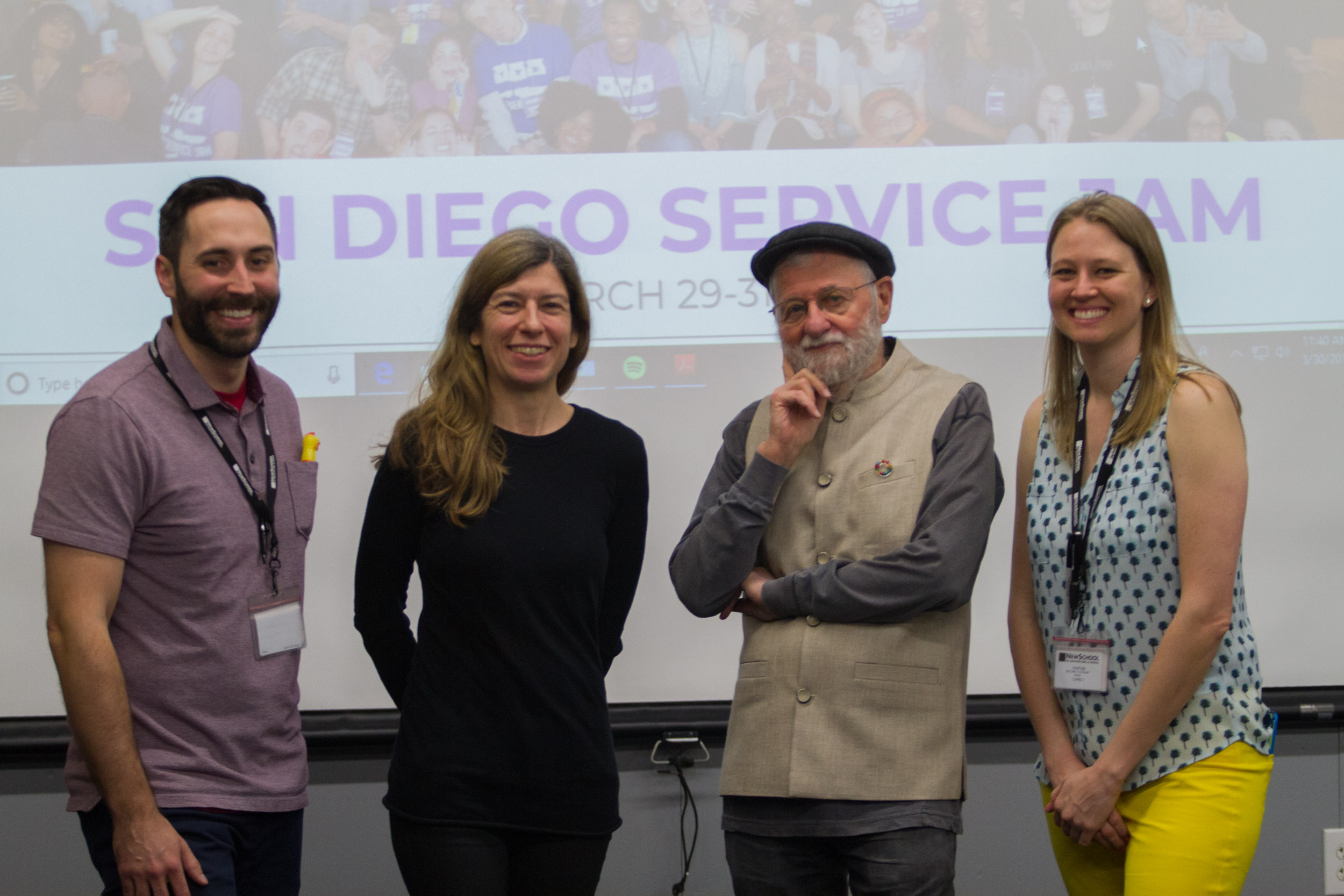
Service Design is a process framed around “design thinking” concepts where designers focus on creating optimal experiences to best meet customers’ needs. Guided by a human-centered design mindset and in-depth research, the process allows designers to develop services such as apps, community programs or even tangible products. Service Design uses tools that include brainstorming, user research, ideation, rapid prototyping and testing. The goal of the weekend Service Jam was to create, prototype and publish a new service in less than 48 hours.
Design Insights from Industry Pioneers
During the event, we listened to short presentations by design pioneer Don Norman of Nielsen Norman Group, Elena Pacenti, Dean of the Domus Academy at the NewSchool of Architecture & Design, Brian “Bim” Bimschleger of Arthur, and Paul Hong of ServiceNow. Many other design practitioners and coaches including Jed Robinson, Dawn Ta, Frank Garofalo, Valencio Cardoso, Ken Soto, Diana Runkle, Eric Chagala and Michael Vargas volunteered to assist in the three-day event.
Let the Jamming Begin!
Beginning on Friday night, our hosts Brian LeDuc and Grace Rieger kicked off the jam. We met our fellow jammers and the Secret Global Theme was revealed: blue. Now this sounds very simplistic, but it gave the designers a wide range to define how blue can be attributed to hundreds of ideas. Is it a color, a place, a mood, or an environment?
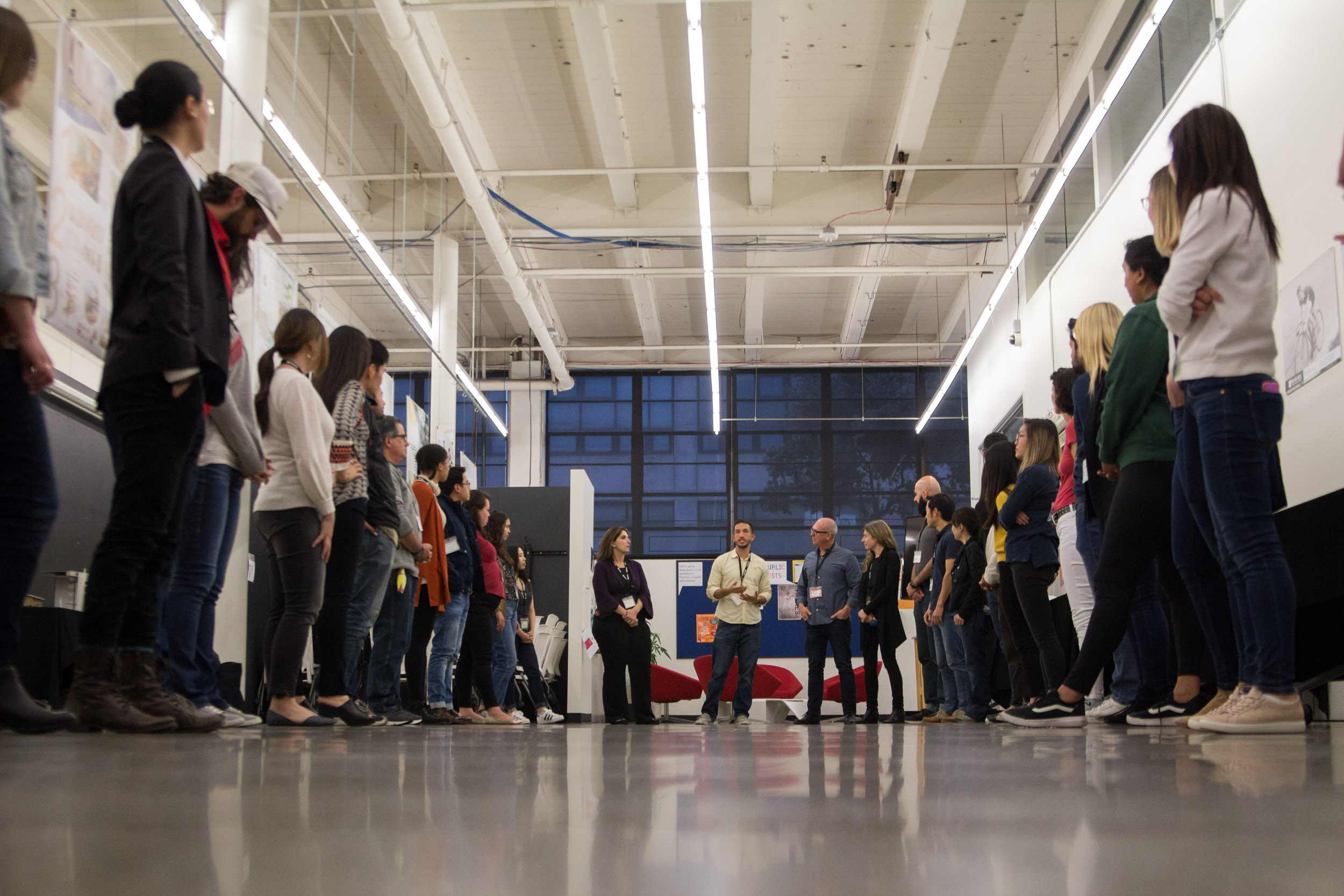
We spared no time jumping right in and began brainstorming about topics inspired by blue. After the most popular topics were chosen, we formed groups based on the themes that resonated for each of us. As a Southern California native and someone with a big heart for the environment, I chose the ocean as my topic to research along with four other designers in my group: Hena, David, Maura and Dana.
Research and Synthesize
Bright and early Saturday morning our group got started by speculating about possible issues that relate to the ocean. From a few brainstorming activities, we broke the issues down to specific ideas that we could focus on. Then we used those ideas to formulate questions for our user research. Research was conducted by interviewing individuals in the downtown area and asking them questions that helped define our focus.
We recognized that pollution is one of the main issues affecting the oceans, so our interview questions addressed:
- Attitudes about ocean pollution
- Consumption and shopping habits
- Personal frustrations about how people treat the environment
- Actions they take to make a positive difference
- Perceptions on the effect of ocean pollution on the local community and bigger picture
Define and Refine
After our field interviews, we headed back to the NewSchool and met up with our teams to begin to draw conclusions from the information and opinions that we had collected. As we organized our data, we observed some truths and facts.
Interview observations:
- Many people want to change their habits to more sustainable practices, but they think it’s too big of a problem for them to make a real difference.
- The current “solutions” (more sustainable, ocean-friendly options) only address the symptoms of the problems. (For example, recycling is great, but it doesn’t impact the creation of new plastics.)
- In general, people are unaware of the actual impact of their consumption habits and also how trash/recyclables are managed after they are collected by waste-management services.
- Social media or mass media could be powerful tools to communicate and inspire behavioral changes for individuals.
From these observations, we drilled down to define the specific problem that we would address:
How might we empower people to make habitual changes in their lives to reduce consumption and increase sustainable practices?
 Forming Concepts Through Ideation
Forming Concepts Through Ideation
Once we developed our main topic, the fun of ideation (a fancy word for brainstorming and developing our concepts) began! This process allowed our creativity to flow freely and to let our imaginations open up to all the possibilities. We used brainstorming activities and went through many, MANY post-it notes to come up with as many ideas as possible. By developing user personas through empathy mapping (visualizing what someone might think, feel, do or say), we predicted behaviors and uncovered other important elements to be considered in developing our specific service. We compiled our ideas and voted on our personal favorites.
Creating a Mobile App
My group decided to create a mobile phone app to track individual consumption and sustainable habits as well as give the user a clear understanding of the impact that their behaviors produce. We also wanted to empower and motivate users to make positive changes in their daily behavior and attitudes. We toyed with the idea of many different app rewards, social features and ways that we could design the visual attributes to support our goals. We then defined the most important features needed and determined specifically what the functions would be in our app design.
 Rapid Prototyping
Rapid Prototyping
The prototyping phase had us out in the field again in no time! We quickly crafted a few prototypes of the app interface by drawing out what each interactive element would look like within the app (on giant post-its, of course!). We then formulated questions that we would ask the interviewees in assess the design’s usability.
Testing the Prototype
Next we took our prototype app to the streets for testing. We asked people what would they expect to see on each screen, what elements they thought would improve the design, and if the features (especially the social elements) would actually encourage them to make changes to their behavior (and if not, what would??).
We listened closely to their responses and made modifications to our designs based on the feedback they gave us.
There is virtually no end to the amount of time we could have spent testing our app. But given our 48-hour time frame, we had to wrap up our process quickly to present our project to the other teams.
Let the Data Speak for Itself
One of the most important ideas I learned from the Service Jam was to let the data speak for itself—show, don’t tell. By doing so, we avoided making assumptions or drawing conclusions that were not discovered in our research and testing. On Sunday afternoon, all of the Service Jam groups had an opportunity to present their findings and show how they came up with a final product.
What data drove the design decision-making process?
My group described our processes and performed a skit to demonstrate the various features of our app design. We then shared some of the observations and revelations that we had uncovered through the entire process.

It was extremely validating to hear people tell us that our app would help empower them to change their daily habits. Some of them even suggested that we continue development to make our app a reality!
We celebrated with a closing reception at 10 Barrel Brewing, which was a great chance to reflect on the weekend and spend more time with our new friends and mentors. The inaugural San Diego Service Jam was a tremendous experience, as I think it was for all of the participants. Most of us went into the weekend unsure of what to expect, but in the end, our passion was ignited by how powerful service design can be for social change and how much better our world could be as more and more people adopt human-centered design practices.
Special Thanks
Grace Rieger and Brian LeDuc are the rockstar co-chairs who brought Global Service Jam to San Diego this year! Thank you for making it such a huge success and for keeping us all connected following the Jam.

As a new member of the organization, I’m pleased to thank Scott Robinson of DesignForward Alliance who sponsored the Jam and was integral to making the event a success. Thank you also to Elena Pacenti for providing the space at the NewSchool of Architecture & Design where the event was held.
To learn about Comet Creative’s ideation processes, take a look at our case studies.





